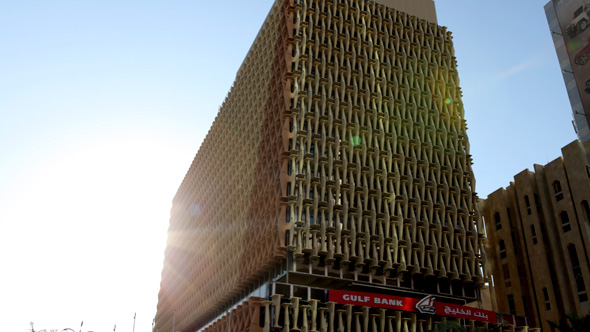Kuwait’s banking system: Moody’s maintains a “stable” outlook on Kuwait’s banking
Moody’s Investors Service issued a report on Kuwait’s banking system in which it indicated that the outlook on the sector remains “stable”, unchanged since 2011.

Kuwait’s banking system: Moody’s maintains a “stable” outlook on Kuwait’s banking
Moody’s Investors Service issued a report on Kuwait’s banking sector in which it indicated that the outlook on the sector remains “stable”, unchanged since 2011. This outlook expresses Moody’s expectation of how bank creditworthiness will evolve in this system over the next 12 to 18 months.
The “stable” outlook mirrors the agency’s expectations of a still supportive operating environment due to high oil revenues injected into government spending. Such a benign environment would support financial stability including the banking sector’s strong capitalization and sufficient liquidity. In parallel, Moody’s expects that the profitability of the banking sector would recover as the level of provisions would maintain a declining streak.
Such a benign environment would support financial stability including the banking sector’s strong capitalization and sufficient liquidity. In parallel, Moody’s expects that the profitability of the banking sector would recover as the level of provisions would maintain a declining streak.
According to the rating agency, Kuwait’s non-oil 2013 GDP growth would reach a five-year high of 3.2% mainly due to the government’s spending. Moody’s added that with the adoption of an electoral law favoring the election of a pro-government parliament, capital spending would accelerate in 2014. Also, credit growth would hasten from 5% -8% in 2013 to 8%-10% in 2014 as business opportunities related to the tendering of infrastructure projects pick up.
Pertaining to capitalization and liquidity, Moody’s expects that the Tier 1 ratio would remain close to 15.3% with banks having sufficient capital to absorb shocks. Also, the sector would remain predominantly deposit-funded and would still benefit from access to government-related deposits. System-wide nonperforming loans would stabilize within the 5%-6% range, down from the 10.4% ratio posted in 2009. Indeed, banks have progressed in rehabilitating their loans but lending concentration coupled with the opacity of some restructured and rescheduled loans are posing downside risks to asset quality. The government’s support to Kuwait’s banking system remains unquestionable. This is mainly driven by a history of government back-up and its ability to support the system as evidenced by its strong fiscal buffers and high levels of financial assets managed by the sovereign wealth fund (2.2x GDP at end-2012).
Published in MWM Mena Weekly Monitor, Week 28.